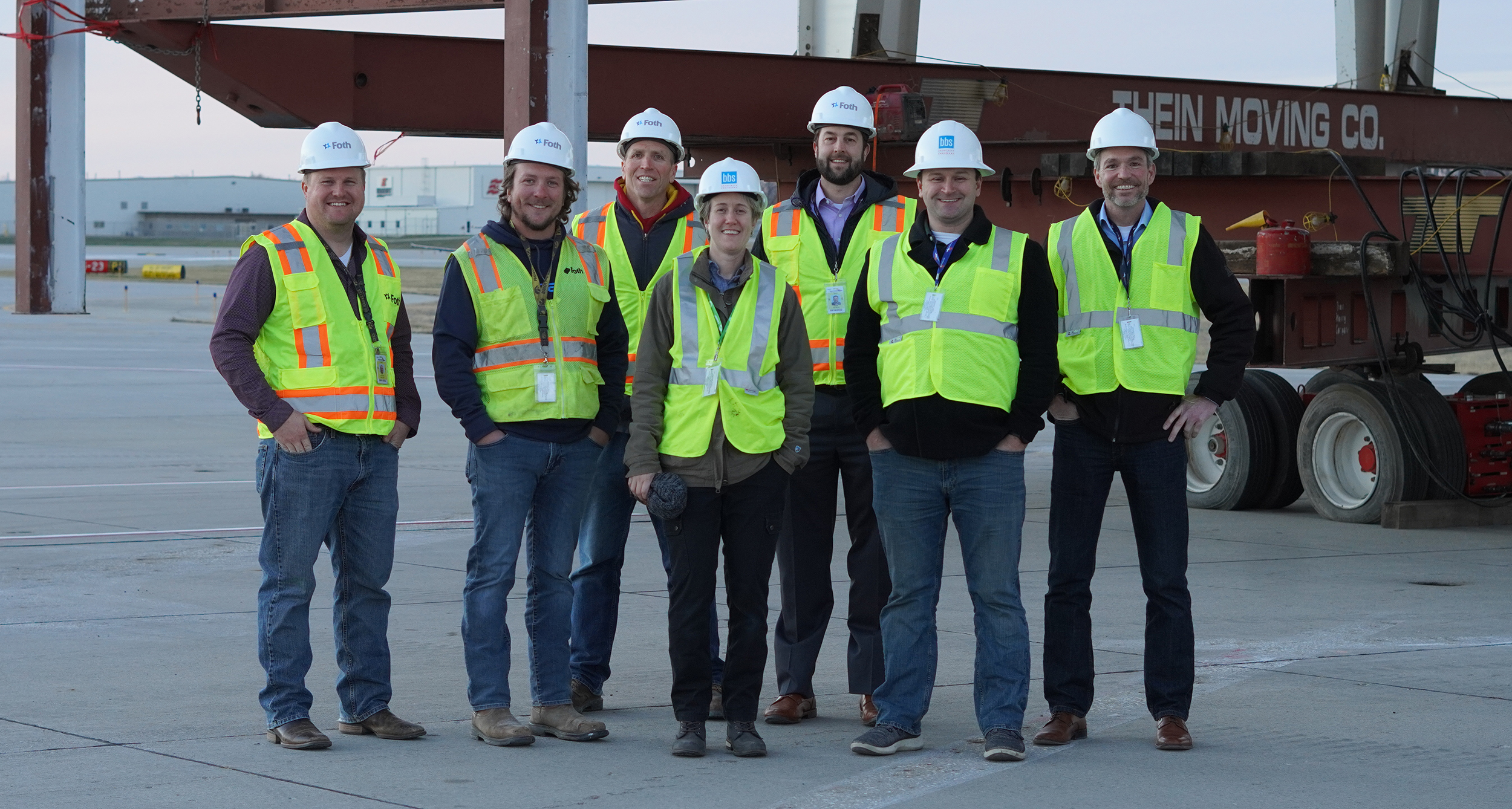
When the Des Moines Airport Authority (DMAA) began planning the upgrade of its passenger terminal to address aging infrastructure and in demand growth, it identified that several enabling projects were required to ensure adequate space for the new terminal. The Airport Authority engaged Foth to provide engineering studies, phasing plans, and support the project end-to-end, which included the largest aircraft hangar move in Foth’s—and possibly Iowa’s— history.
Setting the Stage
The existing terminal needs to remain in operation during construction of the new passenger terminal. As a result, the new terminal will be built adjacent to the original, 70-year-old facility. Four general aviation hangars sit on the new terminal location and the first to be addressed was a 13,000-square-foot hangar used for aviation sales and maintenance.
Typically, old airport hangars are simply demolished, but having worked with the DMAA two years prior to successfully move a hangar half the size, the DMAA approached us to assess the feasibility of moving the larger hangar to another area of the airport. While at first the move appeared to be not only daunting, but impossible, the team at Foth brought a solutions-focused mindset to identify innovative solutions for the Airport Authority.

Engineering and Cost Analysis
To determine whether moving such a large structure was not only feasible but cost effective, Foth worked with a local architect and general contractor to perform detailed engineering, regulatory, and budget analyses. In terms of feasibility challenges, finding a structural moving company willing to take on the project required going out of state to Minnesota. In addition, no as-built drawings were available for the 1980s hangar, so the team scanned the foundation to determine the location of structural columns and anchor bolt patterns.
Comparing the cost of a new building versus moving the existing hangar included considering the costs associated with upgrading the hangar to comply with current building code requirements, and the effect of recent supply chain issues on the price of steel. Downgrading the use of the hangar from aircraft sales and maintenance to aircraft storage reduced code requirements, which represented cost savings as a new facility would need updates to meet current building codes.
Estimating the cost of repurposing the structure included tallying structural analysis, selective demolition, moving, and upgrading costs. The project team worked directly with the City of Des Moines on the building codes to navigate what needed to be upgraded for the intended purpose of aircraft storage. The hangar required a new roof system, restroom facilities, and reskinning of the exterior to match other structures at the new location.

Hangar Preparation and Moving Operations
To prepare the hangar for the move, a contractor performed two months of selective demo to remove components that would not be repurposed such as two 2,500-square-foot office space lean-to structures. To receive the hangar, the new location required design and construction of a foundation with footing locations based on the scanning studies.
As the project moved into construction, coordination between the contractor and airport operations staff was critical. The structural moving company needed two weeks to raise the structure and place six hydraulic minitrucks underneath that would be guided by remote control. The path from the original location to the new site required using an active taxiway and crossing a runway, so Foth assessed the pavement to ensure it could withstand the hangar load and planned for temporary removal of airfield lights and signage.
To minimize impact to airport operations, the move was scheduled to start in the evening so the runway crossing would occur after the last flight at midnight. The move took a total of 12 hours, with three hours of active travel time.

Cost Savings and Environmental Benefits
From planning to execution, the airport hangar move took three years to complete, becoming fully operational in spring 2022. By moving and repurposing the large hangar, the Airport Authority realized a 20% cost savings compared to building a new structure. Not only did the move result in direct cost savings, but reusing the existing hangar enabled a faster time to lease revenue generation for the DMAA and resulted in additional environmental benefits by reusing the existing hangar as tons of steel did not go to waste.
At Foth, whether working on projects in the aviation, mining, food and beverage, or wastewater industries, our goal is to solve our clients’ toughest engineering challenges – no matter how difficult or large. Contact us today to find out how our decades of experience in design, engineering, and construction can benefit your next airport expansion and enabling projects.

Markets: Airports, Municipalities
Services: Aviation Services, Environmental and Regulatory Services, Strategic Consulting and Planning




